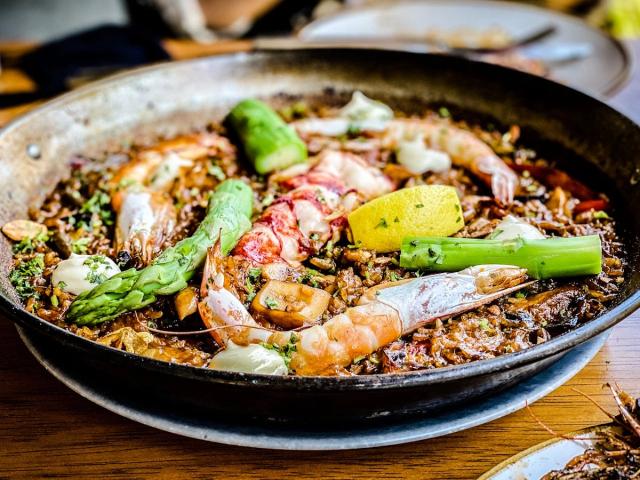Embrace the Spanish Mediterranean diet: a tasty path to health and wellness
Discover the secrets of Spain’s Mediterranean diet for a healthy, flavorful life
May 18, 2023
Spain is celebrated for its fresh, flavorful, and diverse cuisine–from savory paella to refreshing gazpacho to hearty tortilla de patatas, and abundant seafood. In Spain, food is a lifestyle, with meals stretching leisurely for hours, reflecting a culture that savors every bite.
Moving to Spain? Familiarizing yourself with the Spanish Mediterranean diet and its meal traditions is a flavorful way to embrace its vibrant culture–one of the healthiest and happiest in the world.
What is the Mediterranean Diet?
The Mediterranean diet, celebrated as one of the healthiest ways to eat, is at the heart of Spanish cuisine. Rich in olive oil, fresh produce, legumes, and seafood, it prioritizes balance and simplicity. Spain’s regional specialties may vary, but they share common threads: fresh ingredients, generous use of olive oil, and a deep appreciation of shared meals–a tradition that has nourished generations and continues to inspire today.

A Day of Eating in Spain: Meal Times and Traditions
In Spain, meal times follow a unique rhythm, blending light bites with heartier dishes to create a deliciously punctuated day.
Early Morning (Desayuno): The day starts light with coffee and a simple bite, like a biscuit or fruit.
Mid-Morning (Almuerzo): A more filling “second breakfast” often consists of a bocadillo (sandwich), a slice of tortilla (a thick Spanish omelette normally with potatoes and onions), or bread with tomato.
Lunch (La Comida): The main event, served around 2 p.m., includes hearty stews, rice dishes, fish, chicken, lentils, or pasta. This is the largest meal of the day.
Afternoon Snack (Merienda): More social than substantial, merienda is a time to gather at a cafe or bar for coffee, beer, or light bites like olives, sandwiches or a pastry.
Dinner (La Cena): Usually a lighter, more social meal with friends or family, it begins around 8:30 p.m. Tapas, pinchos, or salads are popular choices, often enjoyed with a glass of wine.
How to Embrace the Spanish Mediterranean Diet
Embracing this diet is easy in Spain. It’s as simple as dining at local restaurants to experience regional flavors firsthand. To bring these elements into your own kitchen, focus on Mediterranean staples like olive oil, fresh fruits and vegetables, seafood, legumes, and whole grains to create your own versions of Spanish classics.

Shopping for Authentic Ingredients
Shopping in Spain retains much of its traditional charm. While supermarkets like Mercadona and Carrefour offer convenience, traditional shops provide authentic flavor. Visit a fruteria for produce, a carniceria for meat, or a panaderia for fresh bread. Local markets are also perfect for finding fresh ingredients and culinary inspiration.

Health Benefits of the Spanish Mediterranean Diet
The Mediterranean diet has been linked to a wealth of health benefits, including:
Lowering the risk of cardiovascular disease
Supporting healthy body weight
Regulating blood sugar, blood pressure, and cholesterol levels
Reducing risk of certain cancers
Maintain brain health as you age
Promoting longevity
These benefits aren’t just due to food choices–they’re also the result of the Spanish lifestyle, which emphasizes daily movement. Together, diet and lifestyle form the cornerstone of the Spanish approach to health.

Explore Spain with Ukio
Ready to experience the Spanish Mediterranean diet firsthand? There’s no better way than a visit to Spain! With Ukio’s beautifully furnished, ready-to-live apartments in Madrid and Barcelona, you can immerse yourself in Spanish culture. Savor fresh seafood, paella, pan con tomate, tortilla de patatas, and local olive oil from the heart of Spain’s culinary landscape.